All Nippon Airways recently became the last airline in the world to take delivery of their first A380. The airline has three of these planes on order, and plans to use them exclusively to fly between Tokyo and Hawaii, which sure is an unconventional use for these planes.
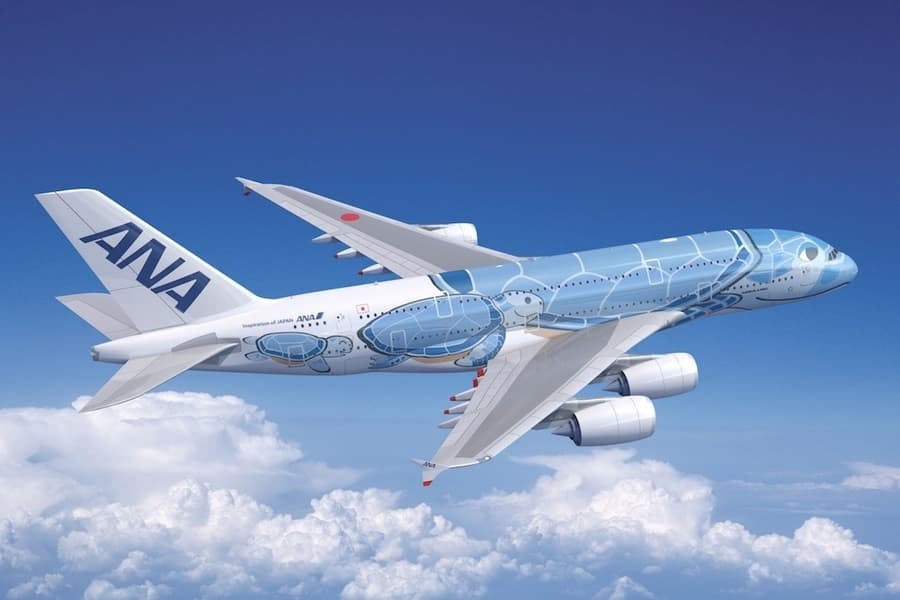
The inaugural ANA A380 flight took off yesterday from Tokyo to Honolulu, and I saw tons of pictures from the flight. The one thing that stood out to me the most in the pictures was the flight attendants, and specifically how they all had a portable tablet strapped around their shoulder, and an earpiece in one ear.
I wondered if I was the only person who noticed that, but I wasn’t, because Paddle Your Own Kanoo also wrote about this. ANA is the first airline to test such a concept, and it sort of makes sense.

Image courtesy of ANA
An A380 has a massive crew of 20+ flight attendants, so what’s the best way for them to communicate? Historically you’ll see flight attendants make calls between galleys, which always results in a “chime,” and also isn’t necessarily an efficient way to reach a particular crew member.
So instead ANA flight attendants have earpieces, so that they can be reached at any point during the flight. This is no different than what you’ll notice on the ground in Japan, as ANA lounge attendants and even gate agents all seem to have earpieces as well.
It’s interesting that the last airline to take delivery of the plane is also the first to trial a concept like this.
An ANA EVP said the following regarding the concept:
“By making it easier for flight attendants to communicate with each other, they will be better equipped to meet passenger needs.
These wearable devices are just one important tool that ANA is testing, and we look forward to harnessing the latest technological breakthroughs to improve every aspect of the travel experience.”
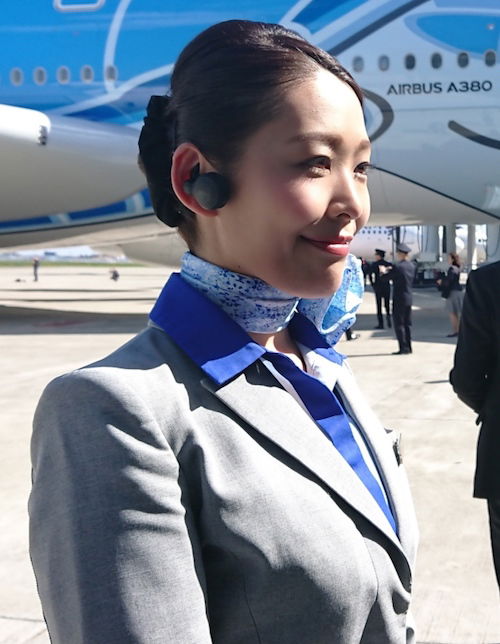
Image courtesy of ANA
While I’m skeptical of a lot of the technology advances crews are using, this is actually sort of genius. It’s an efficient way for crew members to communicate, and it also limits cabin disruptions.
The one downside is that it just seems sort of uncomfortable to have a tablet dangling over your shoulder the entire flight, especially given the number of functions crews have to perform.
Conversely, I’m actually not a huge fan of the trend we’re seeing at some airlines where they use smartphones to take your meal orders. I experienced this recently in Emirates business class, and thought it was very poorly executed. The systems don’t seem to be easy to use, and the crew members just stare at their phone the whole time, rather than making eye contact with passengers.
I’ll be curious to see if other airlines adopt ANA’s system, or if ANA expands this concept to other planes.
What do you make of flight attendants wearing earpieces to communicate with one another?


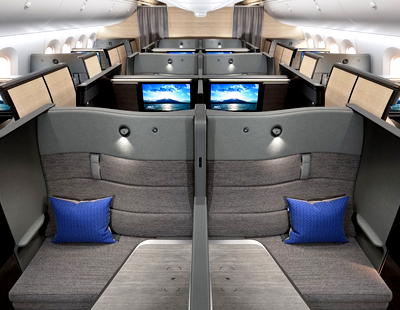
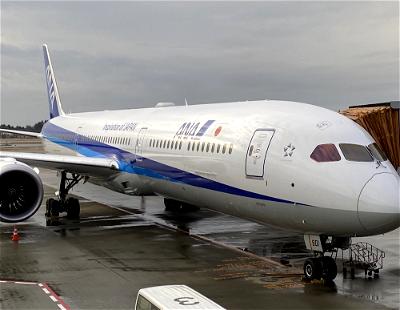
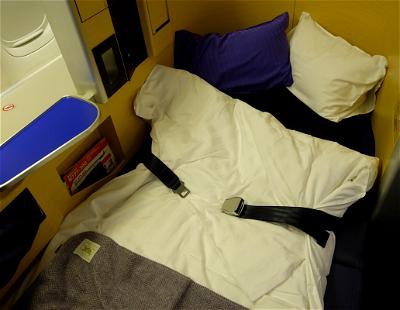
JAL was probably first to use this (domestic flights)
From an FA’s perspective: communication by interphone primarily serves a safety purpose. Crews need to rely on them to communicate what they witness from anywhere on board, be it smoke, flames, heart attacks, what have you. Serviceability is the responsibility of ground technicians, and some airlines require crews to test serviceability of each handset on board before each flight. While on duty, crews select which station (one or all) they need to reach when setting...
From an FA’s perspective: communication by interphone primarily serves a safety purpose. Crews need to rely on them to communicate what they witness from anywhere on board, be it smoke, flames, heart attacks, what have you. Serviceability is the responsibility of ground technicians, and some airlines require crews to test serviceability of each handset on board before each flight. While on duty, crews select which station (one or all) they need to reach when setting up interphone calls.
I’ve been working in the air for some years now and have seen the introduction of tablets. They are great, helping to improve customer service. But wireless communication has so many weak links: battery charge, network strength, access points in workin order, etc. Using wireless devices to communicate information relevant to an FA working his/her section seems a tech savvy step forward. But will FA’s on wireless devices take part in endless chatter on a partyline with 20 fellow crewmembers to hear that some passenger on the other deck wants ice cubes? Seems exhausting to me.
Back to the topic of safety: will FA’s be held accountable for working headsets? If a crewmember hears emergency related information too late or never at all due to faulty wireless tech, who is responsible? Did she charge her device long enough prior to reporting for duty? Did she check its wifi/Bluetooth functionality? Is she carrying backups? My guess and hope is that airlines will default to non-wireless procedures during emergencies. Nonetheless, just making sure my tablet is charged prior to flight (even for service purposes) sometimes costs me sleep.
Conclusion: for FA’s this would be great servicewise if they get in on only relevant communication throughout the crew and safetywise if they’re not held accountable for the technical serviceability of their devices or can default to wired systems in emergencies.
If you’ve ever watched traffic into HNL and seen the seemingly endless stream of 787/a330-sized aircraft from JAL/ANA, putting an a380 on this route makes a ton of sense!
This is a good idea. As mentioned by one of the comments above Airlines can use the same 2 way radios used by Securities and Secrect Services. In large planes they use the different channels to separate the areas assigned to each crew members. In smaller planes they should be able to use the same channel since they work in only 2 areas, and they are not taking or communicating all the time.
I also found the Emirates smartphone approach cumbersome.
It does seem clunky to carry a tablet over their shoulder the entire flight. It would seem particularly awkward while distributing meal trays -- reaching out with the arm where the tablet is must be tons of fun. US airlines use mobile phones, which can fit into an apron pocket.
I wonder if they have to put them in airplane mode during takeoff and landing?
Agree, this is such a simple solution that should result in greater efficiency and coordination.
Is ANA the first? If you Google "JAL" and "Sony Xperia" you'll see that they tested something like this last year.
Is ANA the first to do this? JAL tested headsets like this some time last year
http://press.jal.co.jp/en/release/201804/004700.html
I was on a domestic ANA flight last week on a 777 with no more than 75 pax and that chime went off incessantly. I see the benefit of these tablets for long haul when pax are sleeping to keep the peace. It seems that ANA will have too much capacity for an over-saturated route.
I am guessing the reason why no other airlines have done this before is because any device that is capable of emitting on some type of frequency needs to be flight tested and certified before it can be implemented. Rather than spending the time and money to test a new technology, it's easier to fall back on existing infrastructure.
kinda crazy no one has thought of this before. security guards use it to communicate with each other at concerts/shows/restaurants/bars, secret service too, makes sense crew should have earpieces as well.
This is so much more subtle and well thought out than our dumb airlines state side which have FAs shouting down the aisle like a mad dog. I always find that annoying and insensitive.
Leave it to the Japanese to make a go at it! I hope it succeeds and spawns further innovation.
Why is using an A380 between Tokyo and Honolulu “an unconventional use of these planes?” Isn’t this the perfect type of high density route the plane was designed for?
This is a great idea and very efficient for the cabin crew members to deliver service to the passengers. Having said that, I agree with your point of view that it must be awkward to carry the full paraphernalia on themselves all the time.
Brilliant idea.
As a cabin crewmember myself, having to rely on the interphone is inefficient,
disruptive to guests, and inconvenient (especially when one is in the aisles and needs to
communicate with the galley f/a).
I
Sam Chui also talked about it in his YouTube review of the inaguaral.
I literally thought of this like three years ago and always wondered why Airlines don't implement this. Finally an airline did it!